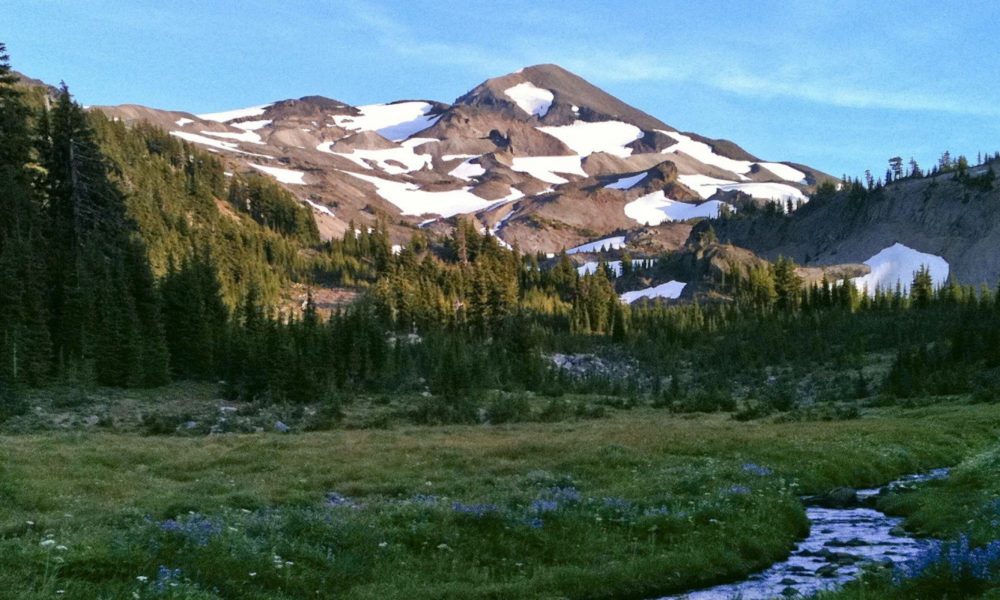As usual, one post leads to another, you saw me mention finding water in my last post, if you read it. So, today we talk about water. Water is the third of the 3’s, the only two more important are air and shelter. Here in the NW we tend to dismiss the importance of water due the usual abundance of it. But, let me tell you, from first hand experience, when you need it and can’t find clean water to drink, you will realize just how scarce it is. Now, I realize most of us are in either an urban or rural setting where potable water comes straight out of the faucet, so we spend little time thinking about the acquisition of water. We don’t think about how we will find water when the pipes run dry.
In the wilderness there are no artificial water pipes, but there is plenty of water, even in the desert. Nature has a way of finding water, it is the only way it can survive. So, keep your eyes open and look for the signs. Mother nature will show you where the water is, or at least where it usually is. Animals need water looks for signs of activity. Small birds that are grain eaters like finches will lead you there in the mornings.
In the forested wilderness that is most of the gorgeous NW, finding water can be as simple as traversing (moving laterally across the slope) a hillside or mountain. you will most assuredly find a stream or pond. In the desert you will want to look for what appears to be a stream bed or dry river. These will usually be found near strips of land that have larger vegetation growing, the greener and bigger the better.
If you find what looks like a dry stream bed there may still be water there. Just as in the desert, dry streambeds with green vegetation are good places to look for water if a readily available source has not been located. The greener the vegetation the better.
A Seep is going to be your go to method of getting water where there is naught.
- In the dry stream bed, at a low spot or the outside of a bend, start by removing the bulk of any rocks lining the stream bed in the area you have decided to dig.
- Now, dig your seep about one foot deep and two to three feet wide. Start by digging an exploratory hole. Look for the soil to start getting darker as you dig. Once you get to about a foot deep you should see either moist soil or if lucky you will see water starting to fill the hole. Sometimes you need to give it a few minutes, take a break and relax, come back to check in a few minutes. You may need to go deeper than a foot. If you don’t see signs of water, find yourself a better spot to look.
- Once you have your seep dug, line it with the smaller rocks you cleared out earlier, this will reduce sediment from getting stirred up when using the seep.
- Filter the water or boil it if you have the means, but in general this water should be fairly clean and safe to drink.
- You can use a t-shirt, kerchief or any piece of fine knit material to filter out particulate.
A Seep or Egyptian well can be used to filter water from an active stream or river, if you find yourself without a filter or means to boil your water. Just dig it about a foot or so away from the water on the bank. The water from your active source will be filtered through the earth and you seep will gradually fill. When you have an active source of water the seep does not need to be as wide, but always go at least a foot down.
If you source of water is a lake or pond, it is best to add a secondary seep about a foot further away, in line with your first seep. Now, take your water from the second seep, it has been double filtered. Since the water in a lake or pond is static, it is more prone to bacteria and parasites.
Remember, it is always best to be prepared for these types of emergency and carry the appropriate tools to make your water safe to drink, whether a filter, tablets or a pot and fire source. Although, we don’t get to decide when bad things happen, we can choose to be versed in the skills that will get us through them. These are the basics, nothing replaces hands on experience. go out there and try it out before you need it to survive.
As alway,
Stay Vigilant and Be Prepared
















You must be logged in to post a comment.